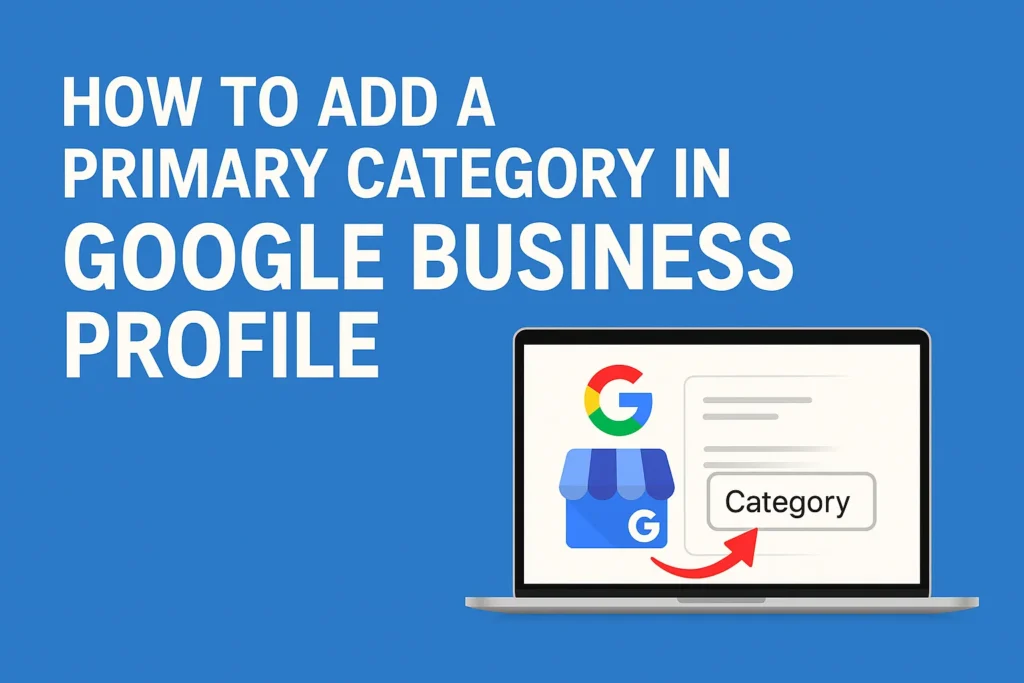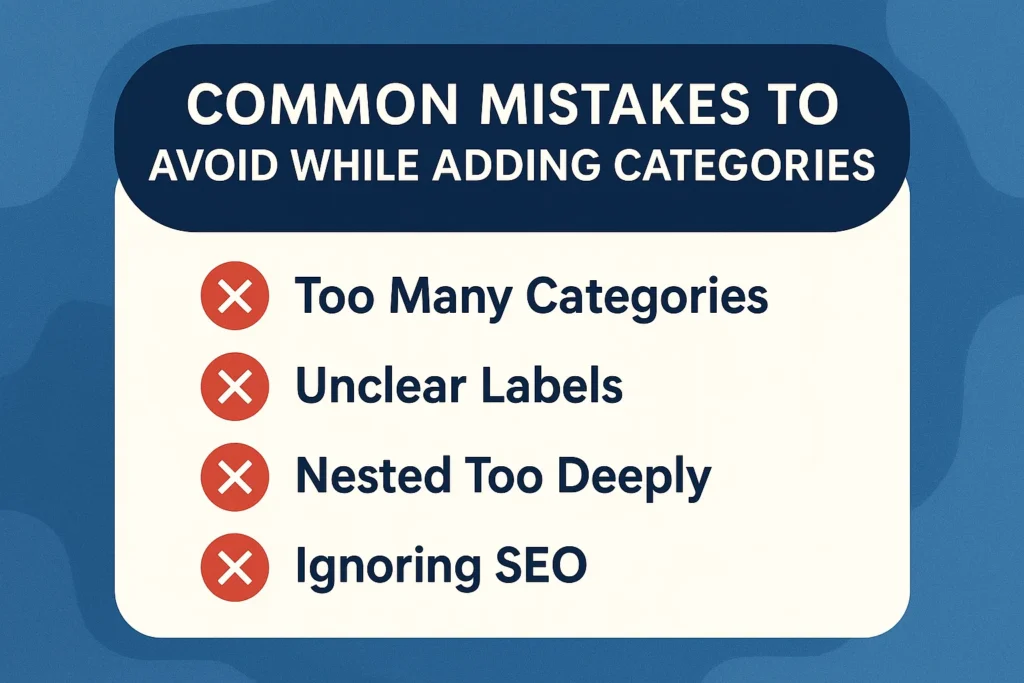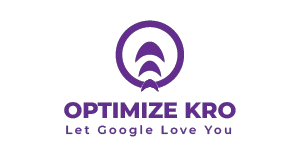
Google Business Profile (GBP), formerly known as Google My Business (GMB), is an essential tool for businesses to manage their online presence across Google Search and Google Maps. One of the most important aspects of optimizing your GBP is selecting the right primary category. The primary category is the main descriptor of your business, letting Google know what your business is about, which helps improve search visibility, local SEO, and customer engagement.
In this article, we will provide a complete guide on how to add a primary category in Google Business Profile, why it matters, best practices, and tips to leverage categories for maximum online exposure.
What is a Primary Category in Google Business Profile?
The primary category is the main classification that defines your business type on Google Business Profile. Think of it as the most accurate label for your business. For instance, a bakery would have “Bakery” as its primary category, whereas a digital marketing agency would have “Digital Marketing Agency”.
Key Points:
- The primary category informs Google about your business type.
- It helps Google match your business with relevant search queries.
- You can select one primary category only, but you can add multiple secondary categories.
Example Table of Primary Categories:
| Business Type | Primary Category Example |
| Restaurant | Italian Restaurant |
| Retail Clothing Store | Clothing Store |
| Digital Marketing Agency | Digital Marketing Agency |
| Fitness Center | Gym |
| Law Firm | Personal Injury Lawyer |
Choosing the correct primary category is crucial because it directly influences which searches your business will appear in.
Why the Primary Category is Crucial for Your Business?
The primary category is not just a label; it is a significant SEO factor for your GBP.
Benefits of Selecting the Right Primary Category:
- Improved Local SEO: Google prioritizes listings that match search queries closely. A correct primary category increases your chances of appearing in local searches.
- Higher Engagement: When users see your business in relevant searches, they are more likely to click through and interact.
- Accurate Business Representation: Your customers know exactly what to expect.
- Better Insights: Google provides analytics and insights based on categories, helping you understand your audience better.
Read More:
How to Write a Google Business Profile Description?
How to Add a Video to Google Business Profile?
How to Add a Cover Photo in Google Business Profile?
How to Add a Google Business Profile Picture?
Step-by-Step Guide to Adding a Primary Category
Adding a primary category in Google Business Profile is straightforward, but it must be done carefully to avoid mistakes.
Step 1: Log in to Google Business Profile
- Go to Google Business Profile
- Sign in with the account linked to your business
Step 2: Select Your Business Listing
- Choose the business you want to edit if you have multiple listings
Step 3: Navigate to the Info Section
- Click on “Info” in the left-hand menu
Step 4: Add or Edit Primary Category
- Click on the pencil icon next to “Category”
- Search for the most relevant category
- Select it as the primary category
Step 5: Save Changes
- Click “Apply” to save your changes
- Google may take up to 3 days to review and update your category
Tips for Choosing the Right Primary Category
Selecting the right primary category is critical. Follow these tips:
- Be Specific: Use specific categories like “Italian Restaurant” instead of a general “Restaurant.”
- Use Google’s Suggested Categories: Google provides a list of predefined categories to choose from.
- Avoid Misleading Categories: Do not select categories unrelated to your business. This can hurt your ranking.
- Research Competitors: Check which categories competitors in your niche are using.
- Think Like a Customer: Consider what your potential customers would search for.
Common Mistakes to Avoid While Adding Categories

Many businesses make errors when setting their categories. Avoid the following:
- Choosing irrelevant categories
- Using multiple primary categories (only one allowed)
- Ignoring secondary categories
- Failing to update categories after business changes
These mistakes can reduce your visibility on Google and confuse potential customers.
How Secondary Categories Work in Google Business Profile?
Google allows multiple secondary categories in addition to the primary category.
Key Points:
- Secondary categories help expand your reach in related searches
- They should support, not replace, the primary category
- Examples: A bakery could have “Café” or “Dessert Shop” as secondary categories
Table: Primary vs Secondary Categories
| Category Type | Purpose | Example |
| Primary Category | Main descriptor for business | Bakery |
| Secondary Categories | Additional relevant descriptors | Café, Dessert Shop |
Impact of Categories on Local SEO
The primary category influences how Google ranks your business in local searches.
Key SEO Benefits:
- Better Ranking in Relevant Searches: Accurate categories help Google understand your business and show it to local users searching for your services.
- Increased Clicks: A correct category attracts the right audience.
- Higher Engagement: Users who find your business easily are more likely to visit or contact you.
For example, if your primary category is “Dental Clinic”, your business will show up in queries like “dentist near me” instead of irrelevant searches.
What Our Clients Say
Trusted by contractors and local businesses for proven Local SEO Services.
John M. – General Contractor
“These guys transformed my Google Maps ranking. More calls, more local leads, and better visibility!”
Sarah L. – Roofing Business
“Within 3 months, my business went from page 3 to the top 3 listings. Highly recommend their Local SEO service!”
David K. – Plumbing Services
“Affordable and effective SEO. My local service calls doubled in less than 90 days.”
Tools to Help Identify the Best Categories
Selecting the right primary category can be simplified using tools:
- Google Business Profile Search: Start typing in the category box and see Google suggestions.
- BrightLocal: Offers local SEO analysis and competitor research.
- SEMrush: Provides insights on categories and keywords competitors use.
- Moz Local: Helps optimize GBP for accurate categorization.
These tools can help ensure you are selecting categories that maximize visibility and reach.
Conclusion
Adding the correct primary category in Google Business Profile is a small but powerful step in improving your business’s online presence. It directly affects local SEO, customer engagement, and how accurately your business is represented online. By carefully choosing a primary category, using secondary categories strategically, and following Google’s best practices, your business can rank higher in relevant searches and attract more potential customers.
Focus on specificity, relevance, and customer intent to ensure your GBP works as effectively as possible for your business growth.
Yes, you can update your primary category anytime through the Info section in GBP. Google may review changes before publishing.
You can add up to 9 secondary categories in addition to the primary category.
Yes, it can affect your local search ranking. Always select the most accurate category for your business.
Choose the closest matching category and use secondary categories to provide additional context.
Typically, changes take 24–72 hours to appear on Google Search and Maps.

Gulfam Qamar is a seasoned Local SEO expert with a proven track record of helping businesses boost their online visibility and dominate local search results. With deep expertise in Google Business Profiles, on-page optimization, and local citation strategies, Gulfam helps brands connect with nearby customers and grow sustainably. When he’s not optimizing websites, he’s sharing actionable SEO tips and insights to empower small businesses in the digital space.

